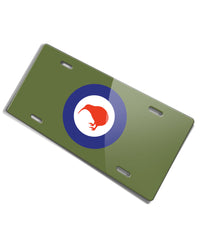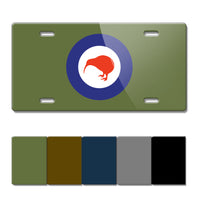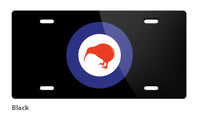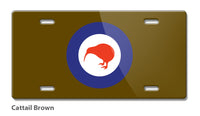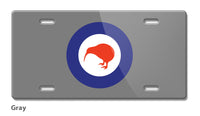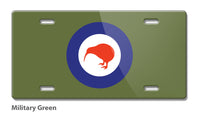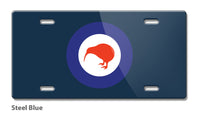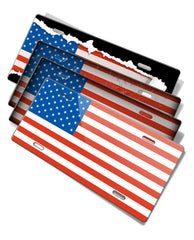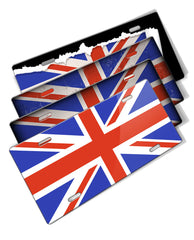






New Zeland Royal Air Force Emblem Novelty License Plate
New Zeland Royal Air Force Emblem Novelty License Plate
The Royal New Zealand Air Force (RNZAF) (Māori: Te Tauaarangi o Aotearoa, "The Warriors of the Sky of New Zealand"; previously Te Hokowhitu o Kahurangi, "War Party of the Blue") is the aerial service branch of the New Zealand Defence Force. It was formed from New Zealand elements of the British Royal Air Force, becoming an independent force in 1923, although many RNZAF aircrew continued to serve in the Royal Air Force until the end of the 1940s. The RNZAF fought in World War II, Malaya, Korean War, Vietnam and the Gulf War. From a 1945 peak of over 1,000 combat aircraft the RNZAF has shrunk to a strength of around 48 aircraft in 2022, focusing on maritime patrol and transport duties. The RNZAF's air combat capability ended in 2001, under the Fifth Labour Government with the disbanding of the A-4 Skyhawk and Aermacchi MB-339 based squadrons. The RNZAF ensign was approved in 1939, based on the ensign of the Royal Air Force, with the letters "NZ" inserted within the roundel. Until the 1950s, aircrafts flew with Royal Air Force roundels; sometimes only the "NZ" prefix to the serial number revealed its nationality within the Commonwealth. From the mid-1950s RNZAF roundels were modified by a fern frond within the inner red circle. Several colours were tried, including green, gold and finally white. The first two were too difficult to spot and the last looked too much like a white feather that further attempts with ferns were dropped and the Kiwi bird was adopted at the end of the 1960s. The nose is always forward and on wings the legs are inwards, towards to the fuselage.
Available in: Military Green - Brown - Steel Blue - Gray - Gray - Black
Made of .032 Aluminum
6" x 12" (153 x 306 mm) standard automotive license plate size
4 holes for easy mounting
Water-resistant
UV protected for outdoor use and durability
Made in USA
While every endeavor has been made to accurately reproduce colors, there may be variations compare to the sample colors, because of the print / sublimation process

